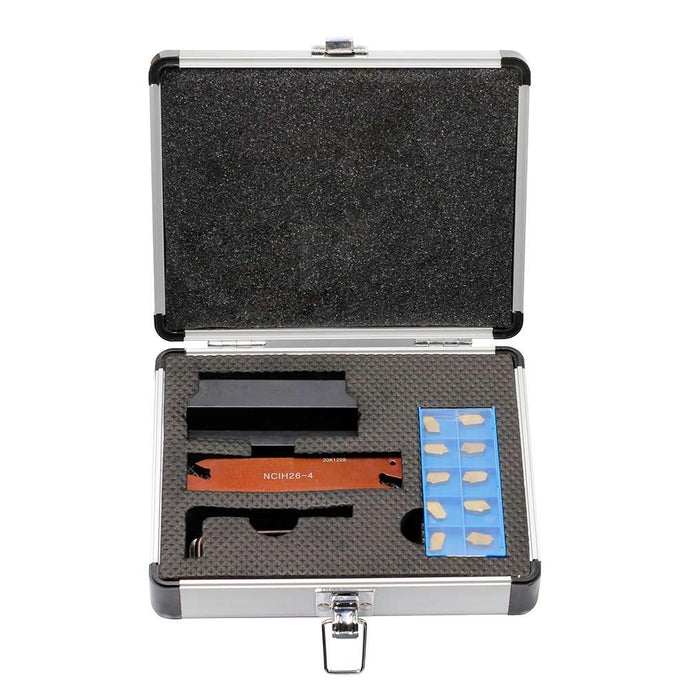Mastering Precision: The Essential Role of Deep Internal Face Grooving Tools in Modern Machining
In the sophisticated world of precision machining, deep internal face grooving tools have become critical assets for achieving high levels of accuracy and efficiency. These specialized tools are designed to tackle complex machining tasks that require cutting grooves deep within the internal faces of components, a challenge that demands both precision and durability. As industries push the boundaries of manufacturing, understanding the functionality and advantages of deep internal face grooving tools is essential for maintaining high standards in machining operations.
Deep internal face grooving tools are engineered to handle the intricate process of cutting grooves or channels into the inner surfaces of components. This process is crucial in various applications, from creating precision grooves for sealing rings to machining complex features in aerospace and automotive parts. Unlike standard grooving tools, deep internal face grooving tools are specifically designed to reach into deep recesses and confined spaces, where precision and control are paramount.
The design of deep internal face grooving tools is tailored to address the challenges of deep and narrow grooving. These tools often feature long, slender cutting edges and specially engineered geometries that allow them to access difficult-to-reach areas. The cutting edges are crafted from high-performance materials such as carbide or high-speed steel, ensuring that they remain sharp and effective throughout the machining process. The choice of material is crucial, as it affects the tool's ability to maintain sharpness, resist wear, and withstand the high forces encountered during deep grooving operations.
One of the key benefits of deep internal face grooving tools is their ability to achieve precise and consistent results. The geometry of these tools is designed to minimize deflection and vibration, which can compromise the accuracy of the grooving process. By maintaining a stable cutting edge and minimizing tool movement, these tools ensure that grooves are cut with high precision, meeting the stringent tolerances required in modern manufacturing. This level of precision is essential for applications where even minor deviations can lead to significant issues, such as in the production of components for high-performance engines or aerospace systems.
The versatility of deep internal face grooving tools further enhances their value in machining operations. These tools are available in various configurations and sizes, allowing machinists to select the most suitable tool for specific tasks. Whether the application involves cutting a shallow groove or reaching several inches into a component, there is a deep internal face grooving tool designed to meet the requirements. This versatility makes these tools indispensable in industries that demand a wide range of machining capabilities, from intricate designs to large-scale production runs.
In addition to their precision and versatility, deep internal face grooving tools offer significant advantages in terms of efficiency and productivity. The ability to perform deep grooving operations with a single tool reduces the need for multiple setups and tool changes, streamlining the machining process and minimizing downtime. This efficiency is particularly valuable in high-volume manufacturing environments, where reducing cycle times and optimizing workflow are critical to maintaining competitive production rates. By enabling faster and more efficient machining, deep internal face grooving tools contribute to overall cost savings and improved profitability.
The durability of deep internal face grooving tools is another factor that contributes to their widespread use. The materials used in these tools are selected for their hardness and resistance to wear, ensuring that they can withstand the rigors of deep grooving operations without frequent replacement. Additionally, advanced coating technologies can enhance the performance and longevity of these tools, further extending their lifespan and reducing the frequency of maintenance. This durability is essential for maintaining consistent machining quality and minimizing interruptions in production.
As manufacturing technology continues to advance, the role of deep internal face grooving tools in achieving precise and efficient results becomes increasingly important. Innovations in tool design and materials science have led to the development of cutting-edge tools that push the boundaries of what is possible in deep grooving applications. These advancements are driven by the need for higher precision, greater efficiency, and improved performance in a variety of industries.
In sectors such as aerospace, automotive, and medical device manufacturing, where precision and reliability are non-negotiable, deep internal face grooving tools are indispensable. Their ability to produce accurate grooves in challenging internal spaces ensures that components meet the exacting standards required for optimal performance and safety. The continued evolution of these tools reflects the ongoing demands of modern manufacturing and the commitment to achieving excellence in machining.
In summary, deep internal face grooving tools are essential instruments in the toolkit of modern machinists, offering unmatched precision, versatility, and efficiency. Their ability to perform complex grooving operations with high accuracy and minimal downtime makes them invaluable in a range of manufacturing applications. As the industry progresses and machining requirements become more demanding, the role of these tools in achieving superior results remains firmly established, ensuring their continued relevance and importance in the world of precision engineering.
